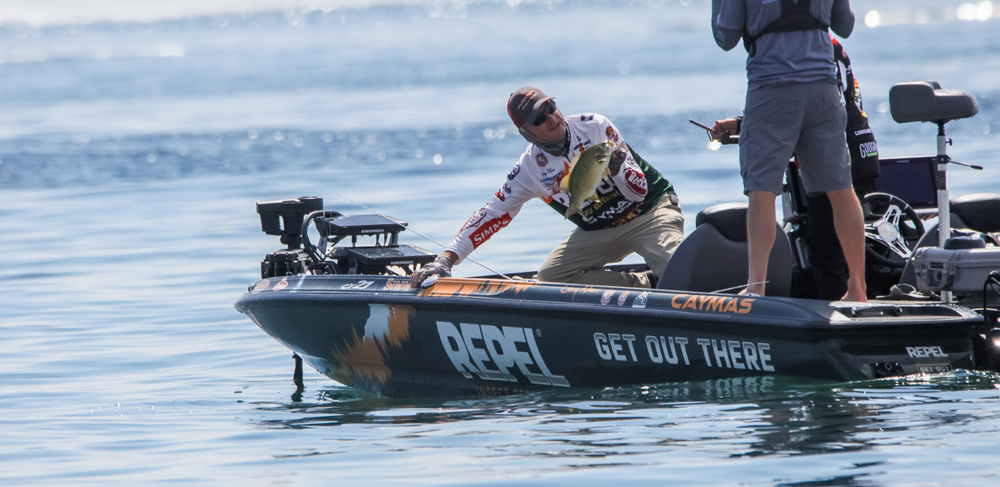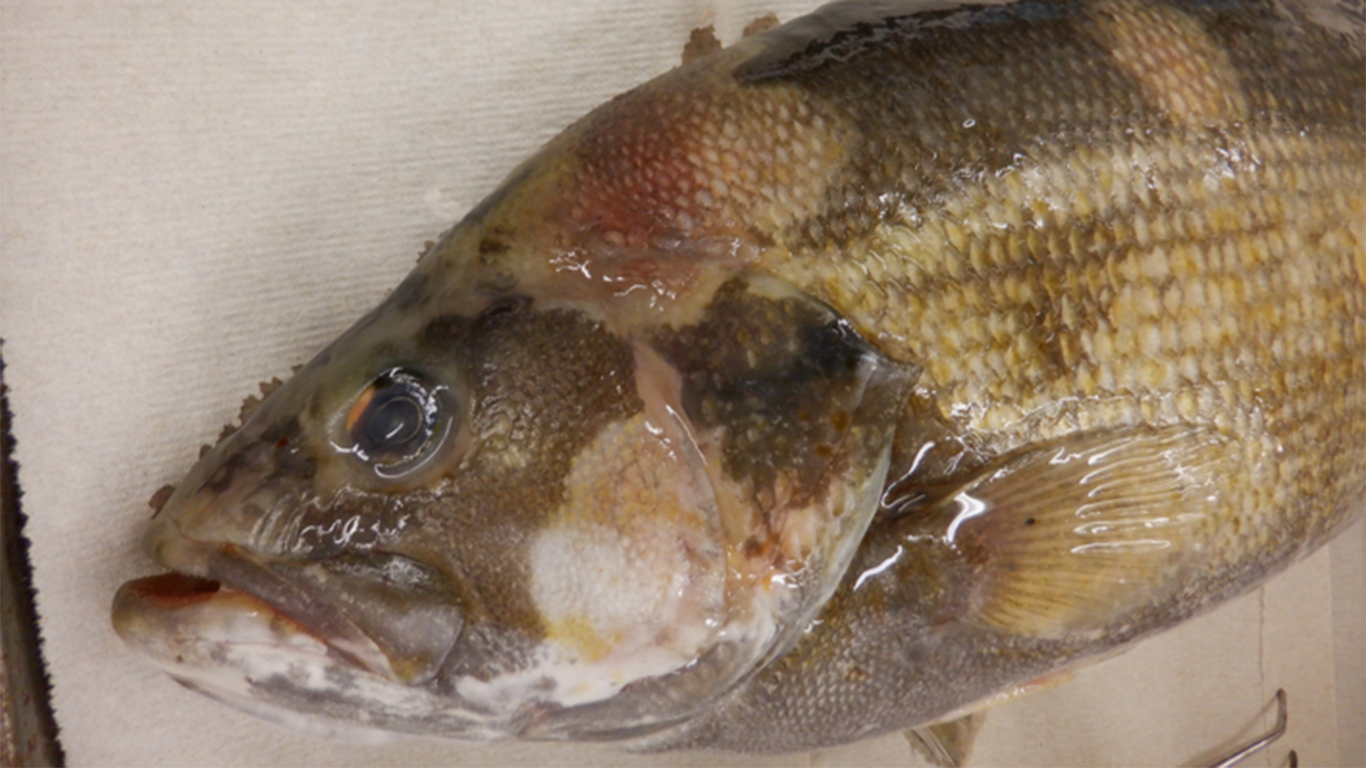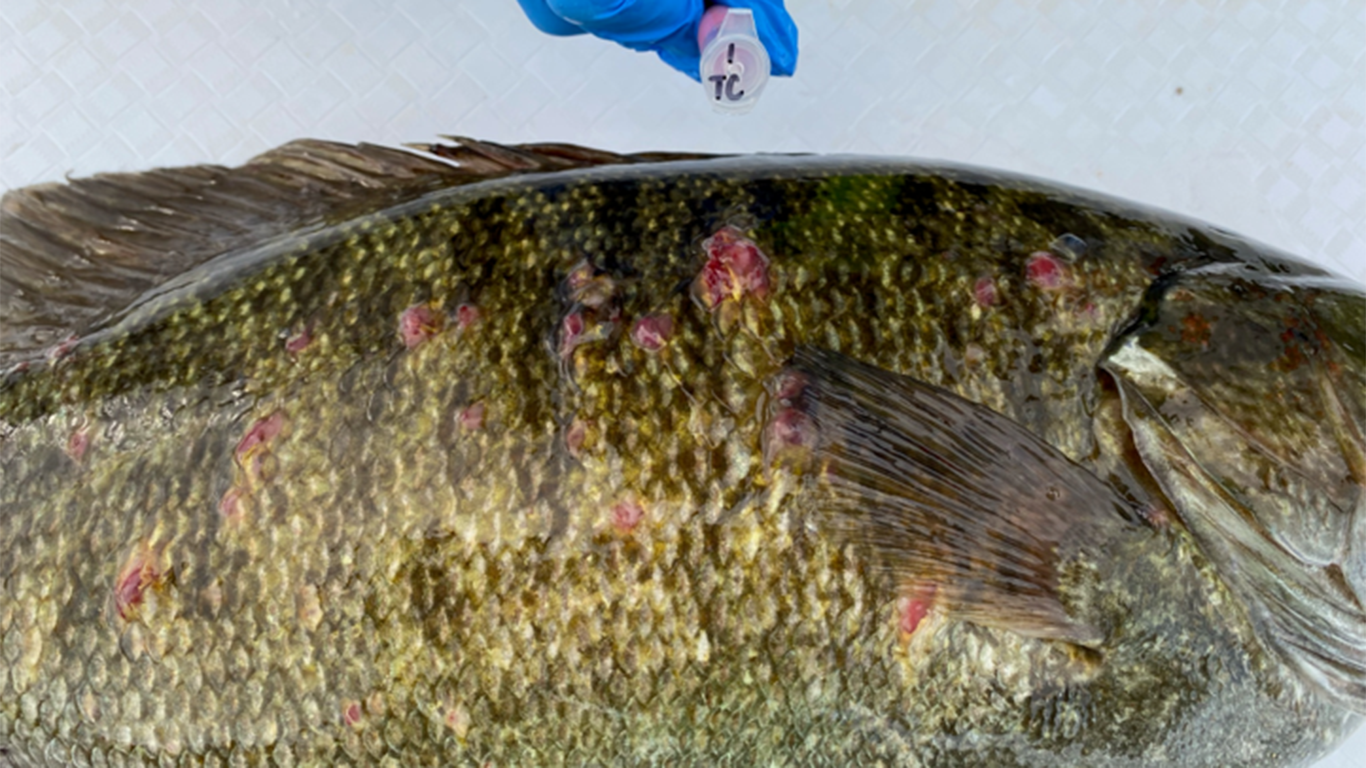MLF Fisheries Management Division, Michigan State Team Up on Key Smallmouth Research
Results from joint 2021 project reveals findings on Largemouth Bass Virus in Michigan

Improving the health of bass was an added bonus to the 2021 Bass Pro Tour Stage Seven event at Lake St. Clair, Michigan. A special rule was instituted to allow the anglers to put fish into their livewells – these fish were then donated to be examined by the Michigan State University Aquatic Animal Health Laboratory.
This team was investigating the correlation between smallmouth bass (Micropterus dolomieu) with skin lesions and Largemouth Bass Virus (LMBV; Santee-Cooper ranavirus, Family Iridoviridae). The efforts were led by Dr. Thomas Loch and his student Rachel London, in collaboration with Michigan Department of Natural Resources, Sault Ste Marie Tribe of Chippewa Indians, multiple departments at Michigan State University and the Major League Fishing Fisheries Management Division in partnership with Berkley Labs (MLF FMD).
What Is Largemouth Bass Virus?

Dr. Loch was part of a previous study published in 2018 identifying LMBV to be a possible cause of young smallmouth bass mortality during summer months in the Susquehanna River Basin of Pennsylvania. During this study, they examined fish from the Susquehanna, Juniata, and Allegheny rivers and found upon clinical examination that fish exhibited protruding eyeballs, skin lesions, and enlarged internal organs.
The research showed findings that demonstrate that LMBV infection, regardless of method of exposure, is lethal to young smallmouth bass. Most mortalities happened within one week, which is similar to infections in largemouth bass (Micropterus salmoides). An increase in water temperature directly correlates to infection and mortality, and the study found that LMBV isolated from these fish had the ability to cause dermal lesions, which was not previously known.
For the 2021 study, Dr. Loch’s team collaborated with multiple groups to collect smallmouth bass from locations within the Lake Michigan, Huron, and Erie watersheds via electrofishing, gill nets and angling efforts. This study was spawned in part from results of fish analysis following smallmouth bass kills at Beaver Lake (Alpena County, Michigan) in September and Avalon Lake (Montmorency County, Michigan) in October 2018. These fish exhibited clinical signs of LMBV, including skin lesions similar to those found in Pennsylvania. This led Dr. Loch to want to quantify the area of potential infection within Michigan.
How MLF FMD & MLF Anglers Assisted the Study in a BIG Way

Before the Stage Seven on Lake St. Clair, the MLF FMD met with Dr. Loch to create a presentation on what skin lesions at various stages of severity looked like so that FMD could present the information to the pros to look for affected fish during practice and provide a daily count of how many they observed with lesions.
Based on the results from practice, it was decided that the 80-angler field could collect enough fish in one day to provide adequate number of samples for the study. During the first day of competition, the anglers successfully collected fish and provided them to Dr. Loch. Once the fish were donated, each angler was given livewell disinfectant to prevent the potential spread of LMBV.
The anglers’ fish were analyzed on site by Rachel London and her team. Nine fish were selected to be entered into the study. The donated fish represented the furthest southern reach of fish sampled. Following the clinical examination and laboratory analysis, the team was able to isolate LMBV from eight of the nine fish provided. Additionally, 35 other fish were in this study, including fish as far north as the St. Mary’s River.
Study Found LMBV Running Rampant Through Michigan Fisheries
Through all the study area, more than 75% of fish sampled were positive carriers of LMBV. The majority of this also had a secondary bacterial infection of either Aeromonas or Flavobacterium columnare.
Along with the positive test for LMBV in smallmouth bass with skin lesions in Michigan, Dr. Loch’s research also provided insight into the northward movement of the virus, which was first detected in Michigan largemouth bass in 2001. The team also piloted a noninvasive swab testing to collect tissue samples from LMBV testing, which proved to be a quick way to successfully determine the presence of the virus.

Dr. Loch presented this research in March 2022 to the Michigan Chapter of American Fisheries Society in a talk titled “Uncovering the potential cause(s) of reported skin lesions in Michigan smallmouth bass.” He also privately presented these results to all collaborating groups, including the MLF FMD and plans to continue the research in other systems where smallmouth are a popular and important recreational fish species.
“The initial data we have generated in collaboration with a range of stakeholders has not only highlighted the capacity that largemouth bass Virus apparently has to cause disease and mortality in smallmouth bass, but also revealed how little we truly know about the effect this virus could be having on smallmouth bass at the population level, nor how we can best prevent and control the disease it causes,” Dr. Loch said after working with MLF FMD. “In particular, we are very interested in clarifying how widespread this virus in smallmouth bass populations in the Great Lakes basin and beyond.
“We are developing strategies that anglers and management agencies can readily use to reduce the risk of LMBV-associated disease outbreaks and mortality events. We are also developing easy-to-use sampling and testing kits that anglers and bass fishing tournament participants can use to team up with our research team towards getting a better handle on this virus. Indeed, we see citizen scientists and anglers as powerful allies in protecting and enhancing the health of smallmouth bass fisheries in the United States.”
MLF FMD Continues to Assist in Research While Looking for More Opportunities
MLF FMD will continue to support this project and others from many universities. FMD is also currently working with graduate students from Auburn University studying with Professor Matthew Catalano, looking into the prevalence of LMBV in Neely Henry Reservoir in northern Alabama in both largemouth and Alabama bass (Micropterus henshalli) within the reservoir. FMD will assist the students by providing access to fish following the weigh-in at the Phoenix Bass Fishing League event on Neely Henry Lake in Gadsden, Alabama, on June 11. The donated fish will be weighed and measured, have fin clips removed for DNA analysis, have organs tested for LMBV presence, and otoliths removed for aging. Results for this study are anticipated for 2024.
If you are a current student and have a project needing support from Major League Fishing, please contact Steven Bardin at [email protected] to see if they can assist you in your research efforts.